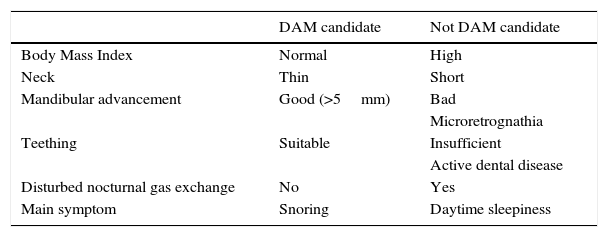Sleep apnea–hypopnea syndrome is an underdiagnosed medical condition which is gainingin importance. It is associated with cardiovascular disease, stroke, hypertension, insulin resistance and traffic accidents, resulting in deterioration of quality of life and increased mortality in these patients. The most characteristic symptoms of the disease are snoring, documented apnoeas and excessive daytime sleepiness. Polysomnography is the gold standard for diagnosis, but in patients with high pre-test probability, we should opt for respiratory polygraphy, a more accessible and less expensive test. Besides making lifestyle changes, the treatment of choice is continuous positive airway pressure. Some surgical techniques may be useful in the treatment of sleep apnoea–hypopnoea syndrome. In patients who cannot tolerate continuous positive airway pressure, are not candidates for surgery or have a high surgical risk intraoral devices might be used.
El síndrome de apnea-hipopnea del sueño es un trastorno médico infradiagnosticado con una importancia creciente. Se asocia a enfermedades cardiovasculares, cerebrovasculares, hipertensión arterial, resistencia a insulina y accidentes de tráfico, con el consiguiente deterioro de calidad de vida y aumento de mortalidad. Los síntomas más característicos son ronquido, apneas presenciadas y excesiva somnolencia diurna. La polisomnografía es la prueba de referencia para el diagnóstico, aunque en los pacientes con una alta probabilidad pretest se debería optar por la poligrafía respiratoria, una prueba más accesible y menos costosa. Aparte de la realización de medidas higiénico-dietéticas, el tratamiento de elección es la presión positiva continua de la vía aérea. Algunas técnicas quirúrgicas pueden tener utilidad en el tratamiento del síndrome de apnea-hipopnea del sueño. En pacientes que no toleran la presión positiva continua de la vía aérea, no son candidatos a cirugía o tienen un riesgo quirúrgico elevado, se podrían utilizar dispositivos intraorales.
Artículo
Comprando el artículo el PDF del mismo podrá ser descargado
Precio 19,34 €
Comprar ahora











